Which 35mm lens is the best? Battle of 35mm lenses on Sony NEX 7. Part I Bokeh.
Here it is – a comparison contest between 20 lenses at 35mm focal length, mounted on Sony NEX 7.
Why those 20 lenses? Why many 35mm lenses are missing?
The answers is simple – I have those 20 lenses and do not have others.
If anyone, who will read this review, have one of those many missing 35mm, that can be mounted on NEX, and want to either send it to me for the test, or test it himself and send me the images, we can let this site grow. (I will probably add new Sigma Art 35 f1.4 in Nikon mount when it comes here, and Samyang 35 f1.4 in Nikon mount, when I find it in my home chaos).
I was also writing to SLR magic, asking them to give me the quote and most importantly, the delivery estimation of their 35mm f0.95, but I didn’t receive decisive answer.
So far, I also couldn’t figure out, if Mitakon 35mm 0.95 is the same lens as upcoming SLR Magic (considering that they are produced in the same factory and designed by the same people), and in one of my previous posts I received valuable comment regarding – not so great performance of Mitakon. I decided therefore, not to wait longer for those Chinese lenses, and will probably never review them. (Unless producer does not send me testing samples, but I doubt they will).
I am kind of sorry because of that, as I think that SLR Magic did and probably will deliver some interesting lenses.
Why NEX 7?
NEX, because of the short flange distance, that makes most lenses possible to mount, and 7, because of the high pixel dense sensor, that has not much mercy with poor optics.
Of course, NEX 7 has several flaws itself, but, I will not compare magenta cast in this test, so it should not affect image quality in most cases.
If any lens can be disadvantaged by NEX 7, it will probably be the only RF lens in this test – VC 35 f1.2 II AS.
So, which lenses are included…
- Canon EF 50mm f/1.2 L USM + Metabones Speed Booster (This combination results on APS-C in 35.5mm f/0.85)
- Voigtländer 35mm f/1.2 AS II (Using Metabones – Leica M/NEX adapter)
- Minolta AF 35mm f/1.4 (Using LA-EA2 adapter)
- Canon EF 50mm f/1.8 II + Metabones Speed Booster (This combination results in 35.5mm and f/1.3)
- Olympus OM-Zuiko 50mm f2.0 Auto Macro + Metabones Speed Booster (using no name – Olympus/Canon EOS adapter. This combination results in 35.5mm and f1.4)
- Sony SEL 35mm f1.8 OSS
- Fujian 35mm f1.7 (Using no name C-mount/NEX adapter)
- Zeiss Distagon 35mm T* f/2 ZE (Using Metabones – Smart Adapter version I)
- Carl Zeiss Jena Tevidon 35mm f/1.9 (Using no name C-mount/NEX adapter)
- Canon FDn 35mm f2 (Using Kipon – Canon FD/NEX adapter)
- Canon FD 35 f2 (Concave front element – Radiocative. Using Kipon – Canon FD/NEX adapter)
- AF-S Nikkor 24-70mm f/2.8G ED (Using no name (zebra color) Nikon G/NEX adapter)
- Contax G Planar 35mm f2 T* (Using Metabones – Contax G/NEX adapter)
- Auto Chinon MC 35mm f2.8 (Using Kiwi – Pentax K/NEX adapter)
- Leitz Wetzlar Elmarit R 35mm f2.8 (Using Kipon – Leica R/NEX adapter)
- Sigma 30mm f2.8 EX DN E (This is only lens that differ in FL. I included it, because it is probably the sharpest native E-mount lens, and incredible value for money those days.)
- Leica Vario-Elmar R 35-70 f4 (Set at 35mm. Using Kipon – Leica R/NEX adapter)
- Canon FD 24-35mm f3.5 L (Using Kipon – Canon FD/NEX adapter)
- Sony SEL 18-55 f3.5-5.6 OSS (Set at 35mm)
- Minolta AF 28-80mm f/4-5.6 (Using LA-EA2 adapter.)
In this first part of the comparison, I arranged a scene that should give you an idea of the OOF rendering differences. Every lens was shot wide open, but because their maximum apertures vary, subject isolations varies too. It is however good to see, what you can expect from each lens and the difference in DOF, related to maximum apertures.
If you want to learn more about bokeh, I strongly recommend you to check this article – On Bokeh from Jakub Trávník.
For the bokeh test, it doesn’t make much sense to compare crops.
Therefore, I made a small video, where I arranged lenses from the “smoothest” subject separation to the “roughest” one. It is of course very subjective and YMMV.
(Video is slightly over 3 minutes)
Following files were used for the video.
Shot in RAW, imported to LR 4.3, exported to Photoshop CS 5.1, added titles, downsized to 2600 px width at 72 DPI using Bicubic smoother algorithm, and posted here. In a single case, WB was corrected. (Canon FD 35 f2 concave, which due to the radioactive glass element, yellowed by time, and I was lazy to cure it). Otherwise, no corrections were applied.
Sturdy tripod, remote control, OSS off, MF, 10 shots of each lens wide open, with re-focusing and selected the sharpest ones etc…
Warning! This is not a sharpness test.
I am preparing sharpness test too, but it will be published in a new post soon.
Voigtlander Nokton Aspherical 35mm f1/.2 II
 |
| Olympus was used with a Metabones Speed Booster and no name Olympus/Canon EOS adapter |
Canon FD 35mm f/2 – rare earth Thorium element
Carl Zeiss Planar T* 35mm f/2 (Contax G)
In this test, there are no winners or losers, and I mean it. “Bokeh” is very subjective aspect of photography, often misinterpreted as a lens quality.
In fact it is more about lens character, influenced by lens design.
Some designs, such as a classic sonnar, does have many aberrations wide open and thus creates smooth soft look, which I personally like. Metabones Smart adapter brings effect called “blooming”, that makes resulting image “glow” around the contrast areas.
Finally, I can see from those results (and not only from those) that the cheapest lens on the earth (well certainly close to) – Fujian 35 f1.7 is capable of interesting bokeh and good subject isolation.
So, regarding “bokeh” – it is all about the look, you are after.
Instead of spending thousands of dollars for the fastest lens, you can learn how to use cheapest ones, think about your shot before you lift the camera to your eye, use distance from the subject and subject from the background, use light and structure of the background in your favor and create images that will stand out from masses.
I will mention few surprises though…
The biggest surprise for me was overall look of the Nikkor 24-70 f2.8G AF-S ED. You don’t want to use this lens on NEX trust me, but comparing it to so many primes, Nikkor has least aberrations wide open, very sharp focus area and pleasant, smooth OOF rendering.
Another pleasant surprise is Auto Chinon 35mm f2.8. I was rather disappointed with Chinon 50 f1.4 (Auto Chinon 50 f1.4 review), but its wider brother is great performer. And it can be found for peanuts.
Finally, Metabones Speed Booster, works really well as a shallow DOF maker. It might have few bugs – vignetting, purple fringing, infinity problem with some lenses and probably few firmware bugs, but it gives something I had been dreaming off – 35.5mm at f0.85 in terms of DOF (with Canon EF 50 f1.2 L USM on APS-C).
While, it is certainly not a cheap combo, it deliver unique subject isolation, that will be hard to beat at this FL.
I uploaded few original RAW files, all taken wide open with following lenses:
Sony SEL 35mm f/1.8 OSS, Minolta AF 35mm f/1.4, CV 35mm f1.2 AS II and Canons EF 50mm f1.8 and 1.2 L with Metabones Speed Booster.
You can download those files here RAW files and use them for your own evaluation, but you are not allowed to use this files on public, without my permission.
Thank you for understanding.
Links to tested 35mm lenses: (tests are in progress. data will be updated and new lenses added, so be sure to check from time to time, if interested)
Sony SEL 35mm f/1.8 OSS
Carl Zeiss Planar T* 35mm f/2 (Contax G)
Canon FDn 35mm f/2
Canon FD 35mm f/2 Thorium
A.Schacht Ulm Travegon 35mm f3.5 R
Voigtlander Nokton Aspherical 35mm f/1.2 II
To help this page survive, your donation will be highly appreciated.




















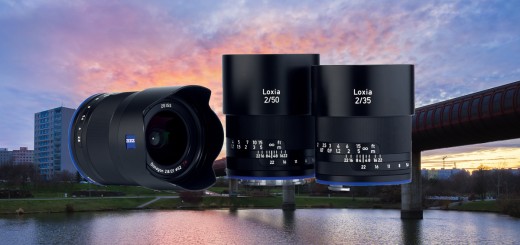
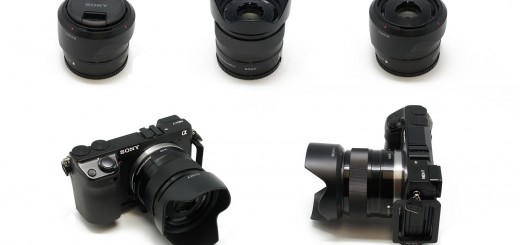
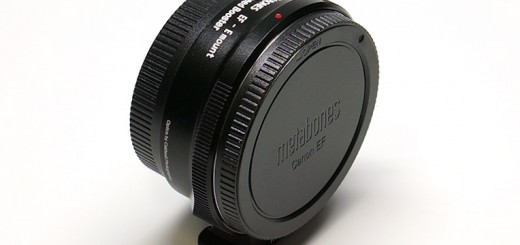
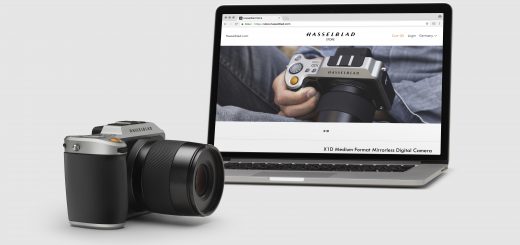
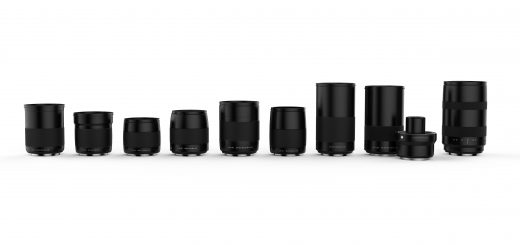
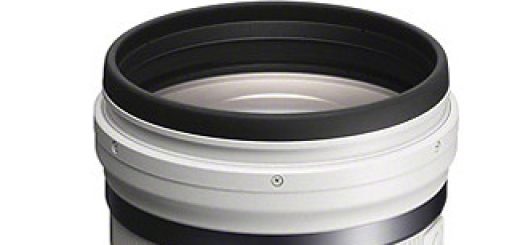
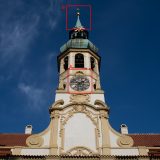
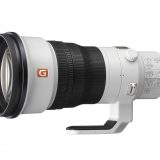
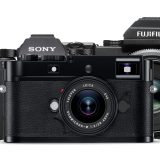
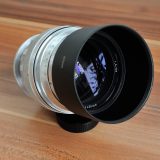
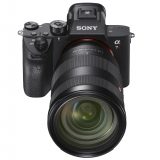
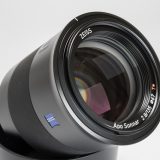

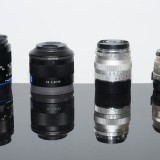
Yeah, as a general rule while looking through your test, the aperture really makes a difference. Sure, there are some that surprise, but the wider aperture plays a significant role. And the Canon 50/1.2 at f/0.85 is just sick. I was thinking of buying a 5DIII just to get the 50/1.2 as my main lens since I like shooting wide open, but you make me think about just adding the lens and speed booster to my 5N. Hmmm. Thanks for the test.
Thanks for the nice test and effort. I am still drooling to see what selection of lenses you acquired…wow
Any hint where to get Speedbooster in the Europe?
I believe the eBay seller “Lensadapter4U” has some deal with Metabones, but you won’t gain anything, as their offer is more expensive. I bought my adapters from eBay seller Lasjashk, the official Metabones seller. You can also write directly to them, and they will send you invoice.
If that is too expensive, did you consider cheaper – Techart or RJ adapter?
Kipon is also supposed to join the club shortly.
I bought RJ adapter and tested Carl Zeiss Distagon T* 3,5/18 ZE With my Sony NEX-FS100.
This didnt worked at all. Please dont buy this adapter.
Zafar Anjum
I love your site! Thank you so much for doing so many amazing tests and sharing the results. Quick question – did you have any clearance issues with the Speed Booster and the Zuiko Macro 50 F2? Some Zuiko’s have lens protrusions that cause problems and the 50 f2 looked questionable.
Thanks. Zuiko 50/2 is on the edge, but it can be mounted as you can see from enclosed images. Just be careful, because it might fit just so,so. After taking it off, I haven’t seen any marks on the SB glass, neither on the Zuikos. Therefore, if it does get in contact, it’s probably at the mechanical part.
Thanks! Lots of my Zuikos look really close but the 24 2.8 and 50 1.8 are the only ones that don’t fit so far. 50 1.2, 1.4 85 f2 and 35 f2 are all good.
Thanks for review, it was excellent and very informative.sharp lenses
thank you 🙂
I dont get it. why the 50mm 1.2 on APS-C sensor with speedbooster is equivalent with a 35.5mm? Since it is cropped sensor the 50mm with out speedbooster is equivalent with 64.5mm. so once you add the speedbooster it brings you back to 50mm. not 35.5 ??
Hi Mario,
35mm lens is 35mm on both Full Frame and APS-C. What differs is field of view between the two formats.
This comparisson was done when majority of users still had APS-C sensors (Full Frame mirrorless wasn’t available). From the perspective of the users of APS-C cameras, adding speed booster to lens such as Canon 50/1.2 meant that they got equivalent of approx. 35.5mm lens (f/0.85) in comparison to other lenses that they are using on the system. Such a lens has similar FOV as Sony SEL 35/1.8 OSS e.g. Both of those lenses (and all other 35mm lenses in this article) would have similar FOV of approx. 50+mm on FF cameras (but those that were made for APS-C will not cover larger format).
For the user of APS-C camera, Canon 50/1.2 with Speed Booster will get close to viewing experience of any other 35mm lens on the market mounted on their camera. Thus, this combination represents another 35mm lens for their consideration. That’s the reason for the description.
Cheers,
Viktor
I got it. Thanks for taking the time Victor! I own the canon 50mm 1.2. . I switched from 7D to a6000 2 days ago. I enjoy street photography and I wanted a lighter, less provocative body. This is the metabone I need to connect my canon to the a6000?
http://www.metabones.com/products/details/MB_SPEF-E-BT2
Too freaking expensive. I could buy an extra lens with this money 🙁
Hi Mario,
yes, best focal reducer is the one in your link. However, you might want to check my brief test done with Canon EF 50/1.2L and Sony A6000, where that adapter was compared to its first (“original”) version and much cheaper – Lens Turbo II – http://www.bhphotovideo.com/c/product/1072738-REG/mitakon_mtkltm2cefse_lens_turbo_mk2_for.html
Here is the link to my review – Part 1 – http://www.verybiglobo.com/metabones-speed-bosster-ultra-review-part-i/
and Part 2 – http://www.verybiglobo.com/metabones-speed-booster-ultra-review-part-ii-canon-ef-501-2-l/
If you decide to go with Lens turbo from the link I added here, it will help us if you use the link in our article for your purchase. (there is I believe – BH, Amazon and Adorama).
Cheers,
Viktor
Hi Viktor,
are you still into this specific topic? I’m currently searching for an inexpensive 35mm lens for my NEX6 because I’m somewhat dissatisfied with my 18-55 kit lens. Can you maybe recommend the Canon FD 2.8 35mm? Firstly, I was also interested in the Sigma 30mm f2.8 EX DN lens but then I realised that the quality only slightly differs to my current kit lens except the bokeh. I’ll use it for street photography, especially for black and white so sharpness is crucial for me. I think it’s pretty hard to find something that ideally costs me about 50€ or maximum 100€.
BTW, thanks for your great effort!
Cheers,
Rafael
Hi Rafael,
I am recently looking for investors in order to keep lens testing on Verybiglobo running, but meanwhile I also designed the comparison tool with up to 4 comparison windows which I’d like to put in work. However it all costs lot of time and money and it is hard to collect at least a partial refund, so who knows what the future brings…
For your particular question, I would recommend Canon FDn 35/2.8, but even more Canon FDn 35/2, which you should be able to find for approx. 100 USD in good condition. I also like Carl Zeiss Jena Flektogon 35/2.4 MC but that one runs for more. Problem with most of those legacy lenses are all sort of aberrations at wide open apertures, so if the “sharpness” is what you are after, I am surprised that you didn’t find Sigma E 30/2.8 appealing. Modern lenses such as Sigma might be little “clinical” but you will hardly beat it with any legacy counterpart when it comes to “sharpness”.
If you don’t need more speed or subject isolation with the “faster” lens, I honestly believe that you will benefit more from a good BW software processing than from the lens upgrade, if the “sharpness” is your main concern. Try e.g. piccure+ (30 days free trial I believe) and see if it works for you.
Cheers,
Viktor
Viktor, thanks for your fast and very helpful answer. I wish you all the best with your website.
Since I’m more or less a beginner when it comes to photography, I sometimes don’t really know what I actually want 😀 I’m on the search for a prime lens because a friend of mine recommended it to me (he’s a decent photographer) to get to know composition and stuff and not simply adjusting the zoom on my current lens when the motif doesn’t fit into my viewfinder.
That’s what I also thought, the Sigma’s results are very clinical compared to older lenses and I don’t know if it’s worth the 100 bucks to have a slightly more bokeh. Correct me if I’m wrong but when I compare the Sony kit lens and the Sigma I see almost no difference, except for the bokeh.
I’ll definitely give the software a try before getting a new lens, thanks for that.
Cheers,
Rafael
Hi Rafael,
your friend has good point in using primes over zooms, but you might tape your zoom at certain position just trying to simulate fixed FL. Great lens is Sony SEL 24/1.8Z and 35/1.8 as well as Touit, but they are all way more expensive, In the legacy world, fast wider lenses were usually very pricey and 35mm was considered as a rather wide angle. There is nice Konica AR 40/1.8 which can be found for cheap, Minolta also had 35/1.8 I believe for not much more, some TV C-mount lenses are valid APS-C option, such as Tevidon 35/1.9, and even 15 USD Fujian 35/1.7 can be nice and creative tool. I loved Tevidon but it cost more. I am using often Sony FE 35/2.8 ZA for BW street photo, and I prefer CV Nokton 35/1.2 when I want more specific look. You might also consider Lens turbo II and than cheap Canon EF 50/1.8 or FD focal reducer. This solution might cost more initially, but you can use adapter for more lenses later. If you like Canon FD 35/2.8, just go for it, though f/2 will give more sense imho, allowing for better subject separation.
There are also Takumar 35/2 and mighty Konica AR 35/2 (or very rare 28/1.8), most of them being more expensive though. With those older lenses just make sure that you can return bad sample, because condition of the glass may vary quite a lot.
All that being said, good knowledge of post processing techniques and routines will improve your final images more significantly, than optical differences between Canon, Takumar Oly, Pentax, Nikon , Zeiss and other comparable (same FL and speed) legacy lenses.
Try the taped zoom method and send me one RAW image if you want, that you are not technically happy with (but you like it otherwise) and I will try to process it differently ,so that you can compare results.
Cheers,
Viktor
Hi Viktor,
I already marked the points (35mm and 50mm) on my zoom lens to simulate a prime lense. I’ll check out the Konica AR 40/1.8 , seems like a pretty compact lens – compared to the Canon FD 2.0 35. All these other lenses are surely great but some of them cost twice as much as my current setup 😀
I’ll contact you later personally when I’m at home and send you a picture.
Thank you very much for everything so far, it’s hard to find good support when it comes to photography. I really appreciate it.
Cheers,
Rafael
Hi Victor,
first of all thank you very much to share your excellent reviews…
I’m very attracted by the CZJ Tevidon 35 1.9 that you reviewed…I already own the 16/1.8 (for Nikon 1 system) and it shows an incredible center resolution and an unbelievable lack of CA. I suppose that in this regard the 35/1.9 is even better. My only doubt is about bokeh at closer apertures…Tevidon diaphragms are usually triangle-shaped and I suspect that this affects the bokeh quality at middle apertures (f/4-5.6…optimal diaphragms for this lens)…can you reassure me about this suspect?
Cheers.
Toni
Hi Toni,
native “bokeh” of Tevidon 35/1.9 is certainly not the smoothest and most of all, it is usually hard to make significant subject separation. This is due to a rather limited magnification and f/1.9 is not great for super shallow DOF either. But I have one Tevidon 35/1.9 with removed aperture (normally they create triangle shape as other Tevidons), and I made my own fully circullar ones (using lens baby creative aperture set). It is easy to place the aperture by simply twisting the whole front element by hand. If I find time, I will post a short tutorial.
Cheers,
Viktor
Thank you for your hard work to make this article, but i think it have some incorrect information that should be edit. Its about crop factor camera when using any reducer. Here are the formula of how to calculate the lenses focal length ex. Canon 50mm f1.2 when mounted on crop factor camera it will be 50×1.5 = 75 and then use focal reducer it will becomes 75×0.71 = 53.25 NOT 50×0.71 = 35.5 it’s incorrect!!! And it’s make your article goes to the wrong way it should be. Hope you edit for a newbie vintage lenses photographer not get wrong information.
(Sorry for my bad English, hope you get what i want to tell you)
Cheers,
Tommy
Hi Tommy, you see, that’s a common misuderstanding among newbies. Lens focal length changes only with the focal reducer or tele-converter or any other optical adapter that alters lens optical design. However, lens focal length DOES NOT change in regard to the used sensor size. Your calculation is thus incorrect in terms of a lens focal length. Canon 50/1.2 becomes indeed 35.5mm with the focal reducer.
What you have in mind (I think) is a Field Of View (FOV), which does alter as you wrote, but that is something different than a lens focal length.
I think there are many sources on the web that describe crop equivalence in detail, so I am not willing to enter the debate, just wanted to point out that you shouldn’t mix lens focal lengrh with the lens field of view.
Cheers,
Viktor aka Verybiglobo